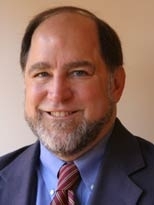MIT Professor Ronald L. Rivest, who helped develop one of the world's most widely used Internet security systems, has been named the 2007 Marconi Fellow and prize-winner for his pioneering work in the field of cryptography, computer and network security.
Rivest, the Andrew and Erna Viterbi Professor in MIT's Department of Electrical Engineering and Computer Science, will receive the award and accompanying $100,000 prize at the annual Marconi Society Award Dinner on Sept. 28 at the Menlo Circus Club in Atherton, Calif.
The Marconi Society, established in 1975 by Gioia Marconi Braga, annually recognizes a living scientist who, like her father Guglielmo Marconi, the inventor of radio, shares the determination that advances in communications and information technology be directed to the social, economic and cultural improvement of all humanity.
"Ron Rivest's achievements have led to the ability of individuals across the planet--in large cities and in remote villages--to conduct and benefit from secure transactions on the Internet," said Robert Lucky, chairman of the nonprofit Marconi Society.
The group cited Rivest's advances in public-key cryptography, a technology that allows users to communicate securely and secretly over an insecure channel without having to agree upon a shared secret key beforehand.
"Public key cryptography has flattened the globe by enabling secure communication via e-mail, web browsers, secure shells, virtual private networks, mobile phones and other applications requiring the secure exchange of information," Lucky said.
A native of Niskayuna, N.Y., Rivest attended Yale University, where he earned a B.S. in mathematics in 1969. After receiving his Ph.D. in computer science from Stanford in 1974, Rivest accepted an offer to join the faculty at MIT.
At MIT he met two colleagues, Leonard Adleman and Adi Shamir, who would become his partners in solving the puzzle of public-key cryptography.
"Ron is a very special person," said Adleman. "He has a Renaissance quality.  If tomorrow he discovered an interest in rocketry, then in five years he would be one of the top rocket scientists in the world."
Fortunately, what captured Rivest's imagination was the challenge of a public key encryption system. He managed to enlist Adleman and Shamir in his quest to produce what he called an "e-crypto system." It was a challenge ideally suited to Rivest's mathematical interests, relying on what Adleman calls "some of the oldest and deepest mathematics, going back to antiquity."
In public key cryptography, there are two keys; one known to everyone, and one known only to the recipient. The public and private keys are paired in such a way that only the public key can be used to encrypt messages and only the corresponding private key can be used to decrypt them. But even if someone knows the public key, it is effectively impossible to deduce the private key. To design such a system was the challenge. In effect, it was a mathematical puzzle.
The RSA encryption algorithm that Rivest, Shamir and Adleman developed relies on the challenge of factoring large numbers (typically 250 or more digits long), a problem that has stumped the world's most prominent mathematicians and computer scientists for centuries.
At one end of the "conversation," the receiving party's computer secretly selects two prime numbers and multiplies them to create a "public key" which can be posted on the Internet. On the other end, the sending party's computer can take that key, enter it into the RSA algorithm and encrypt a message.
The genius of the scheme is that only the recipient knows the prime factors that went into the creation of the public key--and that is what is required by the RSA algorithm to decipher the message. Even though others can see the encrypted message and the public key, they cannot decipher the message because it is impossible to factor the number being used in the public key within a reasonable period of time.
The team developed its system in 1977 and founded RSA Data Security in 1983. RSA was acquired in 1996 by Security Dynamics, which in turn was acquired by EMC in 2006. Rivest has continued his work in encryption and is the inventor of the symmetric key encryption algorithms RC2, RC4, RC5, and co-inventor of RC6.






